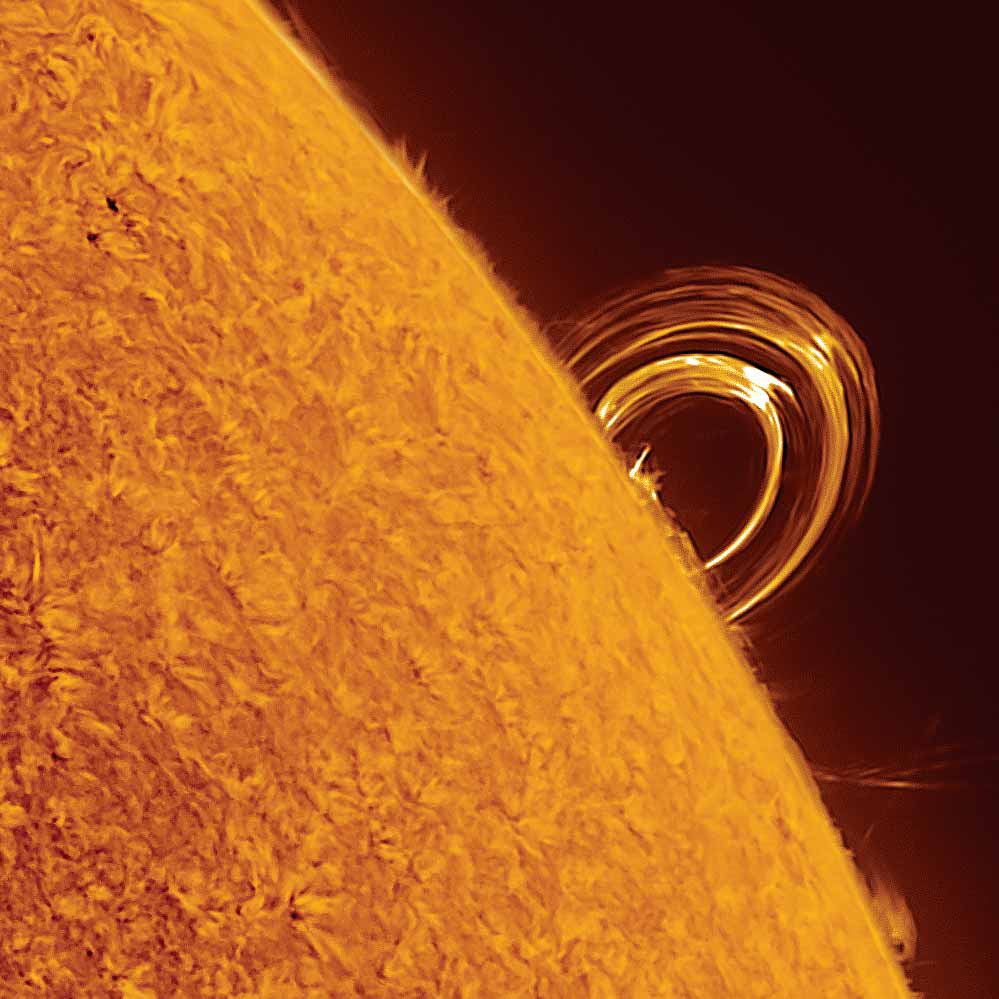
Gabriel Almonte / S&T Online Photo Gallery
Scientists’ new forecast suggests that the current solar cycle will peak sooner and at a higher level than expected. This new prediction has important consequences for space operations, including provisions for the safety of satellites and astronauts.
The Sun goes through a roughly 11-year cycle, starting at solar minimum with very few sunspots. They rise to a maximum over five or six years, then fall away again back to a minimum. We are currently in Solar Cycle 25, the 25th cycle since detailed sunspot records began way back in 1755. Some cycles have been as short as eight years, others as long as 14. With the Sun so unreliable, and with more activity in space than ever before, accurate forecasts are essential.
In 2019, a panel of researchers helped the National Oceanic and Atmospheric Administration (NOAA)’s Space Weather Prediction Center (SWPC) produce a tentative forecast for Solar Cycle 25. The original estimate was that solar maximum would occur sometime between 2023 and 2026, with a sunspot number of 95 to 130. That’s low compared to the average, which is somewhere between 140 and 220 sunspots per solar cycle.
In the years since that prediction, the Sun has surprised to the upside, with greater sunspots and other solar activity than expected. As recently as August, the Earth narrowly avoided the worst effects of a so-called “cannibal” solar flare, where one flare catches up with another to combine into something more threatening. The new, updated prediction now calls for Solar Cycle 25 to peak between January and October 2024, with a maximum sunspot number between 137 and 173.

NOAA SWPC
The prediction marks the debut of SWPC’s experimental Updated Solar Cycle Prediction Product on the Space Weather Prediction Testbed website. “We expect that our new experimental forecast will be much more accurate than the 2019 panel prediction and, unlike previous solar cycle predictions, it will be continuously updated on a monthly basis as new sunspot observations become available,” says Mark Miesch (University of Colorado, Boulder), solar cycle lead at SWPC. “It’s a pretty significant change.”
“What jumped out at me from the prediction is its asymmetry, with a decay phase much longer than its rise phase,” says Ryan French (National Solar Observatory), who was not involved in the prediction. “This means we can look forward to continuing high solar activity (including frequently enhanced aurorae) until at least 2027.”
Aurorae are just one of the effects of increased levels of magnetic activity on the Sun. At the Sun, increased activity includes more frequent solar flares, coronal mass ejections, and a stronger solar wind. “Understanding the solar cycle allows us to plan ahead,” says French. “Knowing the length of the current solar cycle, and likely levels of solar maximum, enables space weather prediction agencies to determine the plausible likelihood of a severe space weather event.” At Earth, those events can cause our electric grids to fail, degrade GPS signals, and increase atmospheric drag on orbiting satellites.
Accurate forecasts also help astronomers understand the Sun better, because the forecasts are based on models of the solar interior. “By developing models, making predictions, and comparing them against reality, scientists are able to validate or rule out certain ideas of how magnetic fields work inside of the Sun,” says French.
There’s one further potential upside. If the new forecast is correct, the current solar cycle will peak close to the solar eclipse of April 8, 2024. This could lead to an impressive looking corona, the outer layer of the Sun’s atmosphere usually only visible during solar eclipses.
